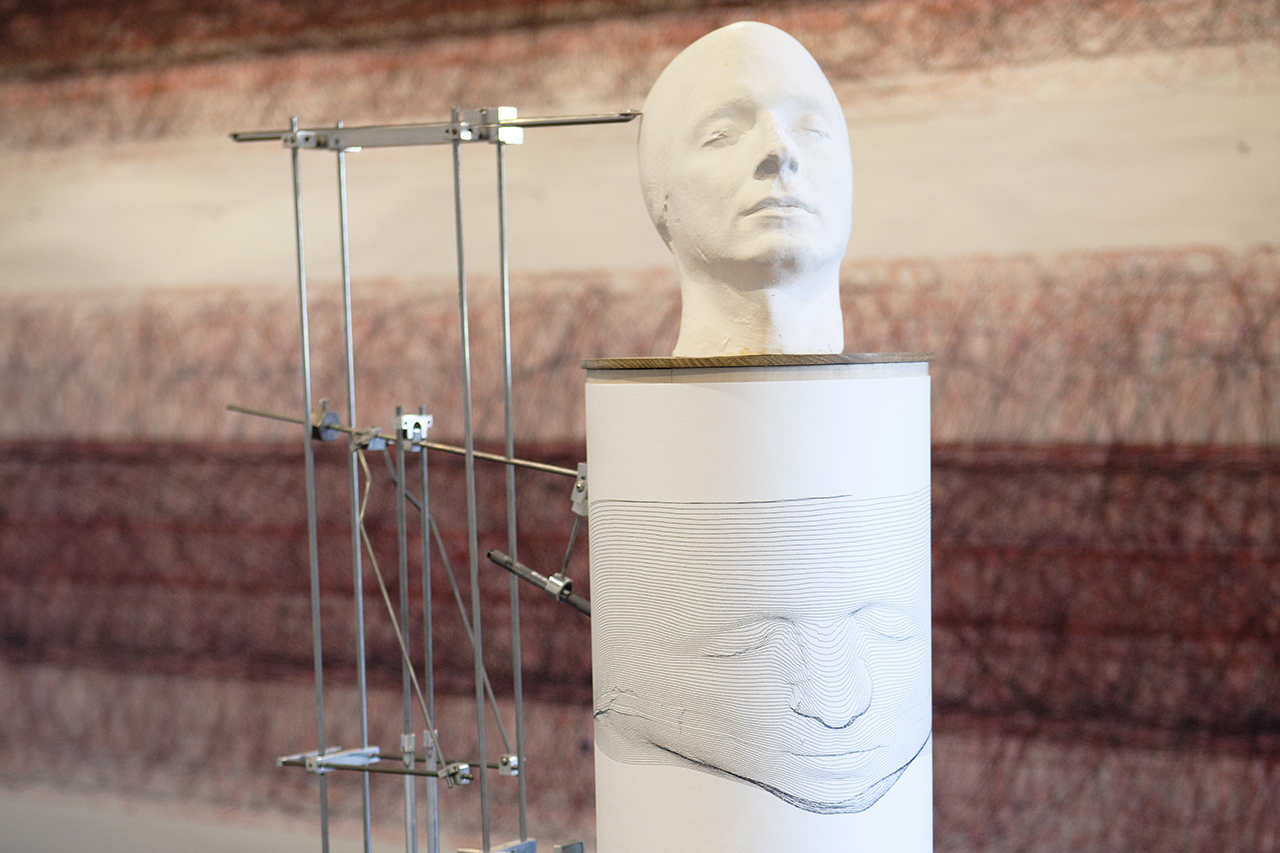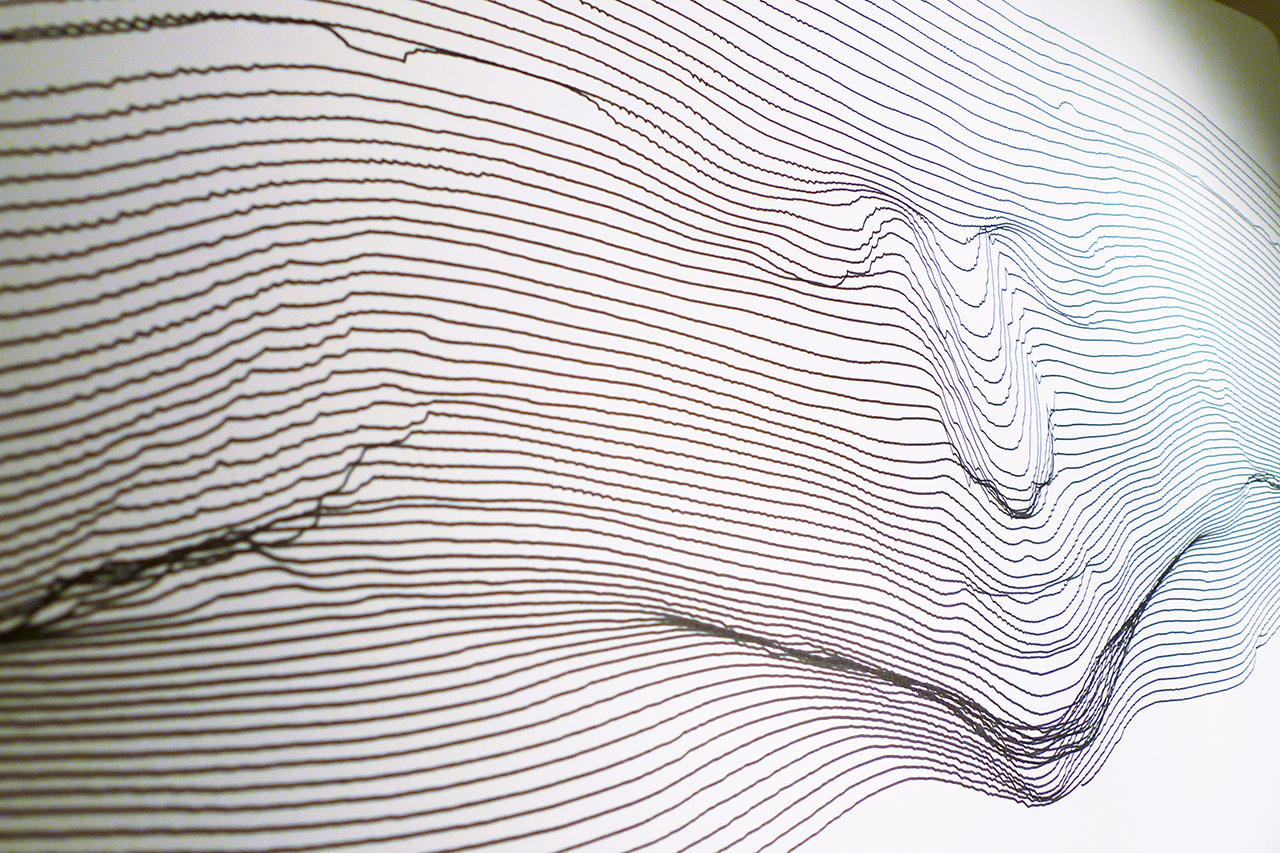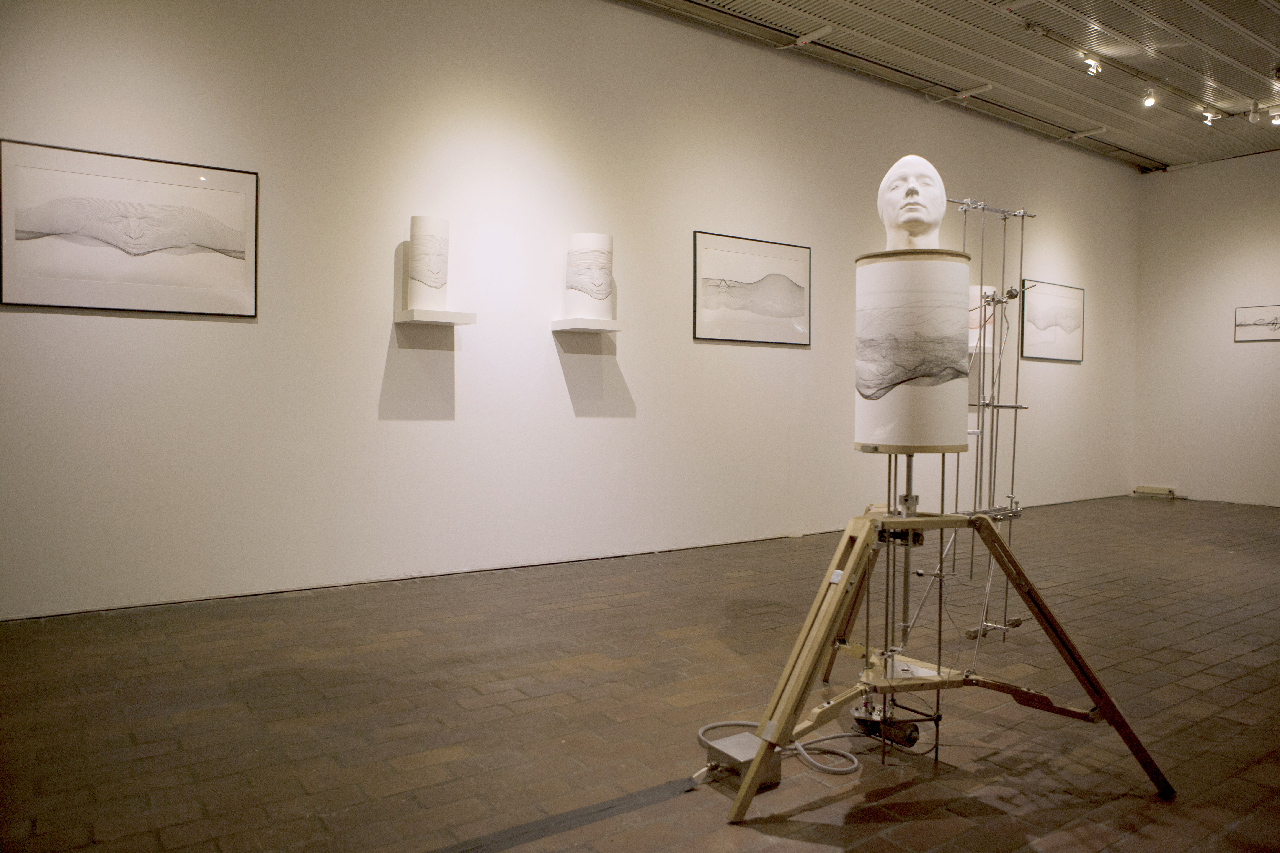Balint Bolygo
"Trace II" (2012) is a sculptural device that alludes to scientific discoveries and the experimental apparatus of science. Like Trace I (2008), it is essentially a mechanical computer tnat draws its analogue program from a revolving plaster head. The carefully balanced mechanism slowly measures the topography of a cast human head and translates its undulations onto a rotating cylindrical surface. The result is an evolving topographical diagrammatic depiction that is truly unique. The work alludes to medical advances that brought well-recognised depictions such as DNA profiling, MRI scans and 3d scanning (popularised by 3d printing). Trace II investigates the process behind the image making and reconnects the viewer in a tangible way with the process behind these fantastic images. Trace II is not only a drawing machine that 'draws' emphasis on the human condition but also questions our ability to understand the ever increasing advances in technology around us. Trace II, uses the more visually transparent and less alienating technology of the past - more likened to the nature of the fingerprint - to allude to technology of the present.
About the artist:
Bálint Bolygó was born in Pécs (HU), in 1976, where he spent his early childhood years, before moving to the UK at the age of nine. He graduated with an MA in Fine Art at Edinburgh University in 2001. His early work already attracted public attention at the Royal Academy Summer Exhibition in 1999. His first major show in London was a collaborative Group Show with David Mach RA at A.T.Kearney Ltd., Berkeley Sq in 2002. In the same year he was selected for the Bloomberg New Contemporaries exhibition at the Barbican’s Curve and the Liverpool Biennial. His first Solo exhibitions in London included ‘Soft Machines’ at the Hiscox Art Projects in 2003 and ‘Mappings’ at the Long and Ryle gallery in 2005. He worked at Antony Gormley’s Studio, for over five years whilst he moved to London and established his own studio in East London.
Since 2006, Bolygó’s continuous involvement with London’s Kinetica Museum, has led to numerous exhibitions in London and abroad, that include ‘Magnetic Visions’, ‘Universal Man’, and ‘Creatures Great and Small’ and ‘Mind over Matter’. He is an active member of the International Kepes Scociety dedicated to light art, and continues to exhibit internationally and with the organisation.
His Italian exhibition’s include the prestigious San Fedele Art Prize, Milan (2008), sculpture biennial of Piemonte, Turin and Kinetic Step at Step 09 art fair, 2010 Milan. Other international exhibitions include a solo show at Budapest’s Feszek Club 2009, Locus Solus, Benaki Museum Athens 2010, Vienna Art Fair 2009/2010 and a commission for the Lightwaves Festival in Dublin’s Science Gallery 2009. His work ‘Polycycle’ has also been selected for the Hybrid Art Moscow in 2011.
In the summer of 2010, he unveiled an ambitious permanent light installation ‘Aurora’ for the newly opened five-star Town Hall Hotel in East London. This was followed by another major light sculpture commission for London’s Canary Wharf tower in 2013.
Bolygo’s international acclaim lead him to Boston in the Autumn of 2013 where he had two simultaneous solo exhibitions at Huret & Spector Gallery and Boston Cyberarts gallery. Bolygó lives and works in London.
An archive : 1999-2010-2019
This page is an archive of the iMAL website that operated between 2010 and 2019. It compiles activities and projects made since 1999.
For our most recent news and activities, please check our new website at https://imal.org



